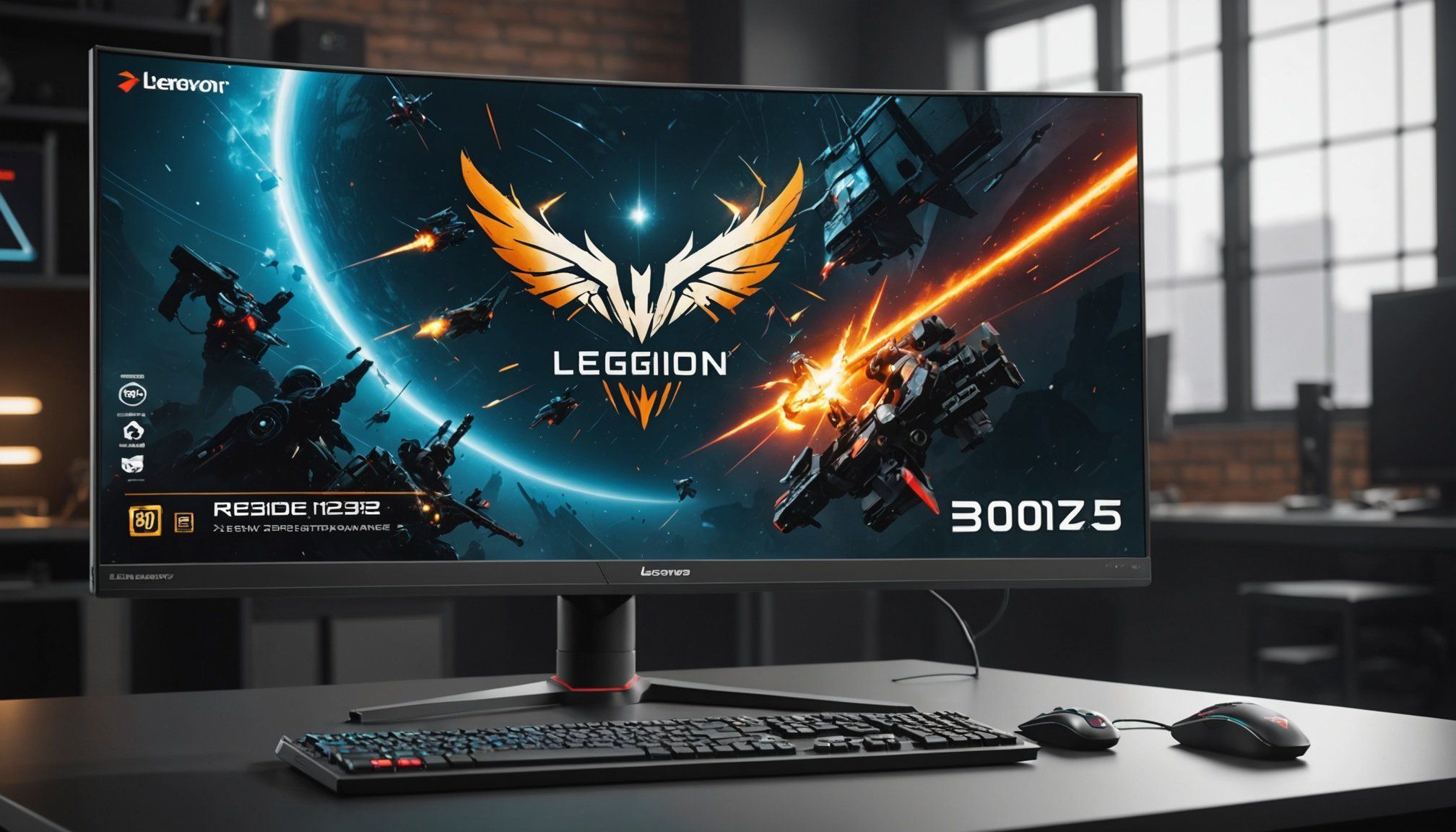Understanding 240Hz Monitors
When it comes to gaming display technology, 240Hz monitors offer a significant advantage. But what exactly is refresh rate, and how does it impact gaming?
Explanation of Refresh Rates
Refresh rate, measured in hertz (Hz), refers to how many times a monitor refreshes the displayed image per second. A 240Hz monitor refreshes the image 240 times each second. This translates to smoother motion and can substantially enhance the gaming experience, especially in fast-paced, competitive scenarios.
Also read : Maximize Your HP ZBook Firefly 15 G7 Battery: Expert Strategies for Enhanced Power Efficiency
Benefits for Competitive Gaming
The primary benefit of a 240Hz monitor in competitive gaming is reduced motion blur. This enables quicker reaction times as players can see and respond to on-screen actions more swiftly. Fast-moving objects appear significantly clearer, providing a tactical advantage.
Comparison with Other Refresh Rates
While typical monitors operate at 60Hz and some gaming models at 144Hz, a 240Hz refresh rate exceeds these by offering even smoother gameplay. However, the actual perception of improvement can be subjective and may depend on the individual’s sensitivity to motion.
This might interest you : Maximize Your Dell Precision 5750’s Potential: Key Strategies for Enhanced 3D Rendering and CAD Performance
In competitive gaming, especially FPS and racing games, having a 240Hz monitor can be the edge players seek to outperform their rivals. Yet, to fully benefit, a compatible graphics card is necessary to push the high frame rates.
Optimizing Display Settings on Lenovo Legion 5
When optimizing the Lenovo Legion 5 display settings, it’s vital to tailor the screen for premium gaming. Begin by accessing the operating system’s display control panel, where you can tweak essential parameters.
Step-by-Step Calibration
To adjust settings, navigate through your OS to the display settings menu. Here, you can alter the brightness and colour by moving the sliders to suit your surroundings. For gaming, consider a slight enhancement in contrast for more dynamic visuals.
Tips for Precise Calibration
- Colour Calibration: Use built-in tools or third-party software to achieve accurate hues. A well-calibrated display ensures games appear as developers intended.
- Brightness Levels: Set brightness to avoid strain during prolonged gaming sessions while maintaining image clarity.
Recommended Settings per Game Genre
Different genres benefit from various settings. For first-person shooters, raise contrast and reduce shadows to spot adversaries quickly. In contrast, role-playing games benefit from richer colours for immersion. Adjusting these display settings on your Lenovo Legion 5 ensures a personalized and enhanced gaming experience.
Graphics Card Configuration
To fully leverage a 240Hz monitor, configuration of your graphics card is crucial. Begin by accessing the graphics card control panel, whether NVIDIA or AMD. These panels allow precise control over settings, ensuring your monitor performs optimally.
Accessing Control Panels: For NVIDIA, right-click on the desktop and select “NVIDIA Control Panel.” For AMD users, right-click and choose “AMD Radeon Settings.” Within these panels, you can adjust refresh rates, resolution, and other detailed settings tailored for a 240Hz performance.
Recommended Settings: In competitive games like Fortnite or Call of Duty, configure the card to prioritize refresh rate over visual quality. Set textures to medium and disable V-Sync to prevent screen tearing. Ensuring your drivers are updated is paramount for stability and performance.
Updating Drivers: Regularly updating graphics drivers fixes bugs and introduces performance enhancements that support the latest gaming technologies. Utilize tools like NVIDIA GeForce Experience or AMD’s Radeon Software to automate driver updates.
Fine-tuning these graphics card settings ensures seamless gameplay, taking full advantage of a high-refresh monitor for an unmatched gaming experience.
Software Recommendations for Maximizing Performance
In the realm of gaming optimization, utilizing the right gaming optimization software can tremendously enhance performance. These tools are designed to optimize FPS and reduce gaming lag, ensuring a smoother experience. Programs like Razer Cortex and Game Fire are popular choices for their user-friendly interfaces and ability to prioritize system resources effectively.
Windows’ built-in game mode features also contribute significantly to improved performance during gameplay. By allocating more CPU and GPU resources to running games, the gaming experience becomes more seamless. This feature can be easily activated in Windows settings, offering a quick solution for performance boosts.
For those interested in keeping an eye on their system during intense gaming sessions, software such as MSI Afterburner provides comprehensive performance monitoring. This tool allows users to track metrics like GPU temperature and usage, ensuring optimal system health.
Incorporating these performance enhancement tools into your gaming routine can lead to smoother gameplay experiences. By leveraging specialized software, gamers can enjoy high-quality graphics and fluid motion, maintaining competitive edges with ease.
Troubleshooting Common Issues
Using 240Hz monitors in gaming can enhance the experience, but they may also present unique challenges. Here’s how to address some common issues:
Common Problems with 240Hz Setups and Their Solutions
One frequent issue is input lag impacting gameplay smoothness. To combat this, ensure your graphics card settings prioritize refresh rate, reducing lag and optimizing frame pacing. Additionally, screen tearing can occur if frame rates aren’t correctly synchronized. Disabling V-Sync or using G-Sync/FreeSync features often resolves this.
Resolving Input Lag and Screen Tearing
Input lag can be minimized by keeping graphics drivers updated and selecting “Low Latency” mode within the NVIDIA or AMD control panels. Screen tearing, a visual distortion, happens when the frame rate and refresh rate aren’t aligned. Users can enable adaptive sync technologies for seamless displays.
Cable Connections and Compatibility Checks
Incorrect cable connections can limit refresh rates, possibly locking them to lower thresholds like 60Hz. Ensure the use of DisplayPort or HDMI cables that support 240Hz, checking specs to avoid compatibility issues. Regularly inspect and maintain these connections for optimal performance. Proper troubleshooting ensures your gaming setup offers the ultimate competitive edge.
Games That Benefit from 240Hz Performance
240Hz monitors bring a new dimension to competitive gaming, offering unrivaled smoothness for high frame rate games. Popular titles like “Counter-Strike: Global Offensive,” “Fortnite,” and “Valorant” significantly benefit from the enhanced refresh rates. These games require quick reflexes and precise movements, both of which are better facilitated by a high refresh rate.
Fast-paced action and shooting games drastically improve with higher frame rates, allowing players to react faster to events, spot enemy movements more easily, and execute actions with minimal delay. The difference in performance is not just noticeable but game-changing for those engaged in the competitive scene.
Many players in the community assert that using 240Hz monitors provides a significant edge over opponents still using lower refresh rate displays. The improved fluidity and precision lead to better in-game performance and a more immersive experience.
In addition to shooters, racing and sports games also see a marked improvement. These genres benefit from reduced screen tearing and motion blur, resulting in smoother gameplay. Adopting a 240Hz setup thus becomes an essential consideration for those looking to excel in these demanding games.
Visual Aids and Step-by-Step Diagrams
When configuring a 240Hz monitor, visual aids serve as invaluable tools to enhance user understanding. Adjusting complex settings can be daunting, but utilizing a visual setup guide breaks down the process into digestible steps. Clear diagrams simplify locating settings, ensuring users have a roadmap to proper configuration.
Diagrams can prove especially useful in 240Hz monitor configuration, showcasing the sequence of actions related to accessing graphics card panels and setting optimal refresh rates. Users often find graphical representations of cable connections beneficial, illustrating the correct ports and cables necessary for achieving full refresh rate potential.
- A step-by-step visualization of graphics card settings, complete with labelled screenshots, aids in navigating control panels efficiently.
- Flowcharts for troubleshooting are particularly effective. They guide users in identifying and solving common issues like screen tearing or input lag, minimizing trial-and-error.
For further assistance, many manufacturers and online communities provide additional resources in the form of video tutorials and interactive guides. Engaging with these materials builds confidence in setting up your gaming display technology, ensuring a smoother and more responsive gaming experience.











